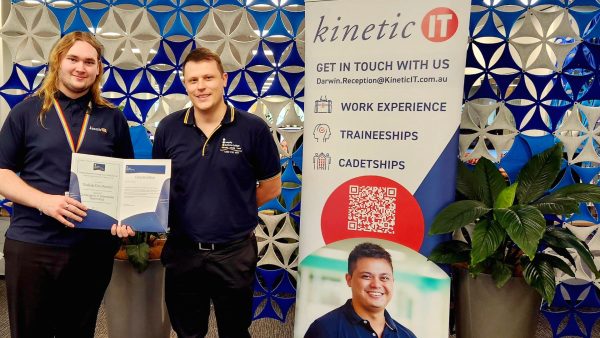Continuous improvement should be high on any organisation’s agenda these days. In our fast and ever-changing world, we need to constantly adjust to keep up with changing requirements and to deliver services that support business outcomes – whether that’s through making those services better, bigger, stronger, faster, or cheaper. The same goes for service models and management; If you want to improve your service management, you need to assess and evolve. Kinetic IT’s Simon Dorst, Manager of Service Management Services, shares his insights on why it’s important to conduct service management assessments – and how to get it right.
Service management assessment – Where do I start?
The existing situation is often referred to as the baseline. We learn in modern best practices, such as ITIL 4 service management, that we should “start where we are” and do a current state assessment to establish this baseline. Without a baseline, demonstrating improvement is difficult – you need something to compare to.
This is where a service management assessment comes in. If we are looking at an established practice, such as service management or service integration, there are a plethora of assessments available. These assessments can be used to quantify the current environment against objective criteria, which are defined by practice guidance and suggested ways of working, such as ITIL® or Service Integration and Management (SIAM™).
While any maturity rating, often defined numerically, is easy to understand, it should be regarded with some caution. Ultimately, the intention of an assessment is improvement, not the achievement of a particular maturity level. A service management assessment can be used to validate achievement or to provide a benchmark to compare to an industry norm or another organisation. It’s the latter – benchmarking – that includes an inherent danger, as each organisation is unique. It’s like comparing apples to giraffes, as they say. It really depends on an organisation’s history, culture and politics amongst many different factors that make it impossible to compare one with another, let alone an industry average.
For example, achieving a rating of two is neither good nor bad but the number requires context. The focus of a service management assessment should be to identify the correct baseline level, then pivot to focus on how to improve the service management model and the value provided from a business point of view.
RELATED CONTENT: How to tell if your SIAM model is hitting the mark
What’s in scope in a service management assessment?
Another consideration is what to assess. Industry assessments previously mentioned in this article often only assess predefined elements of a practice, such as a process. However, an organisation’s operating model consists of many different elements across the four dimensions of services management, including processes, tooling, governance, people capability and culture, to name a few.
This doesn’t mean you can’t use these predefined assessments, but the results of such an assessment need to be put into the context of business needs and elements that were not within scope. This includes asking yourself questions such as how these results impact the achieved baseline and/or the feasibility of improving the process or model.
How do I assess my service model?
A service management assessment can be performed individually or with a group of stakeholders. Individually is, of course, easier as there will be no debate on the accuracy of the assessment. Be aware, this approach can be hampered by your bias, or even a lack of operational knowledge or experience, which can influence the outcomes of your service management assessment. Alternatively, a group assessment can bring forth different experiences or assumptions, adding a different lens that can provide new perspectives and enhance the information gained, and lead to improved findings and results.
There is also the option of engaging with an external resource to perform the service management assessment. A self-assessment can be cost-effective, potentially faster, and can more easily access real operational practices or information. However, self-assessments can be impaired by bias and lack of expertise in the practices being considered, or the experience of conducting assessments and knowing what to do with the results.
There might also be a lack of experience in the implementation of improvements within your organisation, so having the experts involved is recommended. This may positively impact the relevance and accuracy of the results of the assessment or the practicality of any resulting improvements.
RELATED CONTENT: Global SIAM Survey: 9 surprising insights from the SIAM community
Kinetic IT and service management assessment
Kinetic IT can provide external, objective expertise to get the most out of your service management assessment. We are experts in ITIL and SIAM, as well as management best practice and organisational change. We have significant and diverse experience in the application of these in various organisations.
This means we are uniquely qualified to perform a service management assessment. Our analysis and recommendations provide real value to any organisation in defining, prioritising and, if necessary, implementing improvements.
We’ve got three basic, standard assessments to get started with:
- SIAM Archetype Assessment – for those developing a SIAM model
- SIAM Health Assessment – to evaluate assets across your SIAM model
- ITIL/SIAM Process Assessment – for the effectiveness and efficiency of one or more processes
We can combine or augment these assessments with additional components to suit your organisation’s specific requirements.
Kinetic IT’s Service Management fact sheets
Get started with these Service Management fact sheets:
What next?
Remember, a service management assessment is the necessary starting point (baseline) for any improvement. It provides an objective, quantified starting point for defining and prioritising these improvements, and later validating achievements and starting the next cycle of continuous improvements.
Contact our team of experts and start your improvement journey in service integration and management.
RELATED CONTENT: SIAM Archetypes whitepaper: Grow your service integration success
About the author – Simon Dorst

Simon Dorst is Kinetic IT’s Manager for Service Management Services. ITIL trained in 1992, he has spent most of his career educating and advising people and organisations of its benefits and application in the Netherlands, Singapore and Australia.
Known as the ‘ITIL Zealot’, he was the Lead Architect for the Scopism 2nd edition Service Integration and Management Bodies of Knowledge (BoK, 2020), the SIAM Professional BoK (2018) and was also a founder member of the SIAM Foundation BoK architect team (2016). Simon contributed to the VeriSM publication (2017) and co-authored the VeriSM pocket guide (2018).
In 2018 Simon was named one of HDI’s Top 25 Thought Leaders in Technical Support and Service Management; and awarded the itSMF Australia Service Management Champion of the Year, as well as the Thought Leader of the Year (together with Michelle Major-Goldsmith). In 2022, he received the Service Management Lifetime Contribution award from itSMF Australia.
Follow Simon Dorst on Twitter: @ITILZealot














